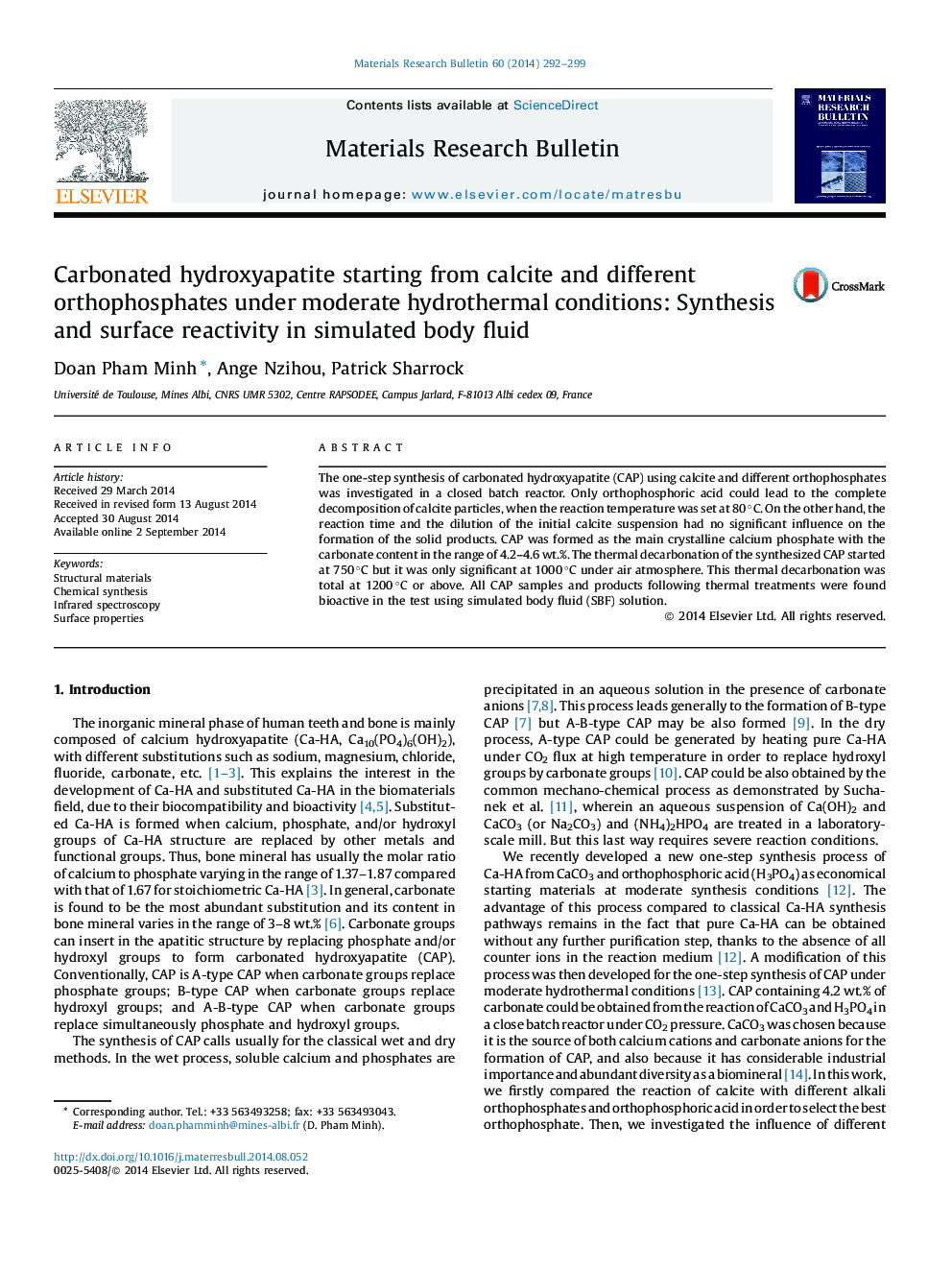| Article ID | Journal | Published Year | Pages | File Type |
|---|---|---|---|---|
| 1487844 | Materials Research Bulletin | 2014 | 8 Pages |
•Carbonated apatite (CAP) could be easily obtained from CaCO3 and orthophosphates.•Highest CaCO3 dissolution and apatitic carbonate content were obtained with H3PO4.•A-B-type CAP was formed.•The synthesized CAP was thermally stable up to 1000 °C.•This CAP showed high biomineralization activity before and after thermal treatment.
The one-step synthesis of carbonated hydroxyapatite (CAP) using calcite and different orthophosphates was investigated in a closed batch reactor. Only orthophosphoric acid could lead to the complete decomposition of calcite particles, when the reaction temperature was set at 80 °C. On the other hand, the reaction time and the dilution of the initial calcite suspension had no significant influence on the formation of the solid products. CAP was formed as the main crystalline calcium phosphate with the carbonate content in the range of 4.2–4.6 wt.%. The thermal decarbonation of the synthesized CAP started at 750 °C but it was only significant at 1000 °C under air atmosphere. This thermal decarbonation was total at 1200 °C or above. All CAP samples and products following thermal treatments were found bioactive in the test using simulated body fluid (SBF) solution.
Graphical abstractFigure optionsDownload full-size imageDownload as PowerPoint slide
